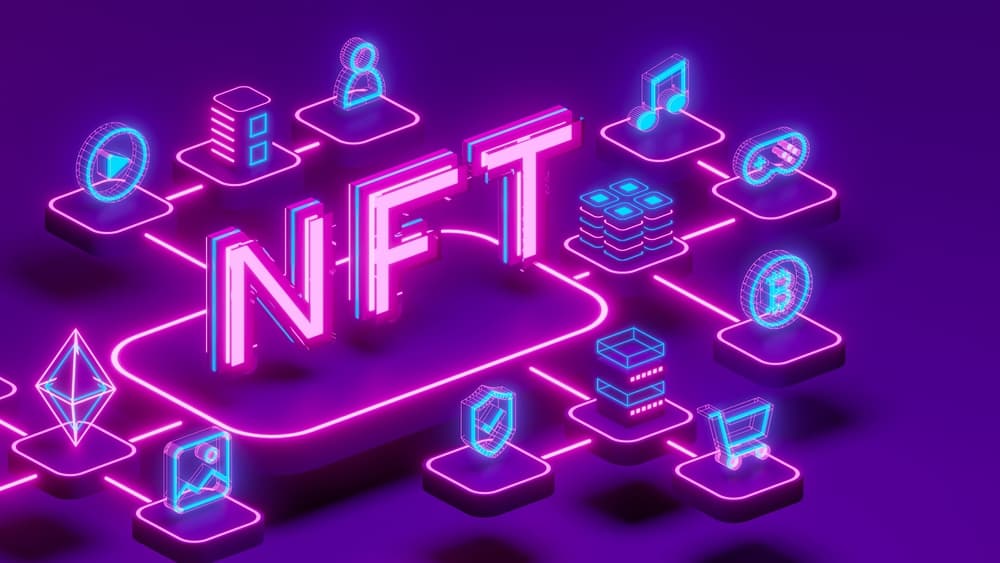Individuals and businesses from various industries, including entertainment, music, fashion, consumer products, and others, have begun to consider ways to participate in the non-fungible token universe seriously.
Although some sellers have chosen to launch their NFT marketplaces, the majority have discovered that partnering with a third-party platform can lower upfront costs, provide access to a more extensive customer base, and provide additional services such as marketing, technical, and legal support.
We’ll look at some of the most popular NFT marketplaces to get a sense of what it’s like to participate in this type of market.
What Exactly is The NFT Market, and How Do You Get Involved?
NFT platforms are built on the concept that, like physical content, digital content can be scarce and thus traded and owned in meaningful ways. There are well-developed platforms in this market that use blockchain solutions to verify the originality of digital content, similar to how a conventional auction house confirms that a given work of art is original and not a fake.
For a variety of NFTs, streamlined platforms host auctions and fixed-price sales. They resemble traditional marketplaces such as eBay, Mercari, and Etsy. These exchanges are primarily concerned with making transactions as quickly as possible. They frequently offer payment methods that accept both crypto credit cards and payments in Ethereum, Bitcoin, and other tokens.
You must first connect your wallet, which is required for any marketplace transaction before you can buy NFTs. You’ll need to add the currency that your preferred marketplace uses to your wallet after connecting your wallet to it. Because many NFT marketplaces use the Ethereum network, you’ll need to add Eth to your wallet at some point. Because different marketplaces use different tokens and blockchain technologies, double-checking that you can make cryptocurrency corrections before completing a transaction is always a good idea.
OpenSea, Rarible, and Nifty Gateway
These three NFT marketplaces are currently trending on top, and there are some good reasons for this.
OpenSea, which deals in virtually every type of digital token, is probably the most well-known. OpenSea alone has over 80 million NFTs and will control 60% of NFT sales by the end of 2022. NFT fans will find everything from popular collections such as Robotos and the Bored Ape Yacht Club to virtual assets and music. Another important feature of OpenSea is its ability to accept a wide range of crypto, giving potential buyers and sellers a lot of flexibility and lowering entry barriers in an already complicated ecosystem.
Rarible, like OpenSea, sells a lot of stuff, but it has a lot more to offer. Rarible may be the best place to buy, mint, and sell on multiple blockchains because it is a marketplace with multi-channel logic. The Rarible development team currently supports Ethereum, Tezos, and Flow, with more on the way. Rarible will maintain its dominance in the NFT market by giving creators complete control over their digital space via its tools.
Nifty Gateway is a cryptocurrency exchange top management platform developed by Gemini. Collectors can pay with credit/debit cards or a variety of cryptocurrencies thanks to custodial technology, eliminating transaction fees. Nifty Gateway was home to some of the first multi-million dollar premium sales. Nifty Gateway is growing in popularity thanks to verified and curated NFT drops, a user-friendly platform, and a client list that includes some of the world’s most famous people.
Conclusion
There are many more marketplaces than the ones we’ve mentioned. Binance, SuperRare, and NBA Top Shot, for example, are all extremely popular. But, the best market is determined by each individual. There will always be an NFT marketplace with the perfect blend of features to meet your needs, whether you are selling, minting, collecting, or browsing.
NFT marketplaces will thrive and innovate as artists, enthusiasts, and collectors continue to pour into the digital collectibles scene. NFTs have had a great start in 2022 so far. Continue to learn about this subject on our blog.
